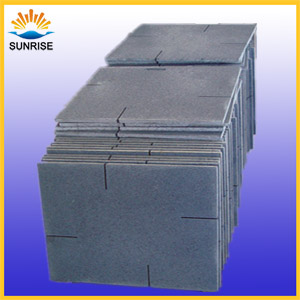Wide application of mullite insulation bricks
2018-08-01
Mullite Insulation Brick is a high-quality refractory material widely used in emerging industries. It has uniform expansion, excellent thermal shock stability, high load softening point, low temperature creep value, high hardness and chemical resistance. Good characteristics, mullite insulation brick classification: mullite insulation bricks are mainly divided into light and heavy mullite bricks according to the density, mainly according to the use of temperature: 1350 mullite brick, 1450 Mullite bricks, 1550 mullite bricks, etc.
The performance and application of mullite insulation brick: high refractoriness, up to 1790 °C. The load softening start temperature is 1600 to 1700 °C. Normal temperature compressive strength is 70 to 260 MPa. Good thermal shock resistance. There are two kinds of sintered mullite bricks and electric fused mullite bricks. The sintered mullite brick is made of high alumina bauxite clinker as a main raw material, and a small amount of clay or raw bauxite is added as a binder, which is formed by molding and firing. The electric melting mullite brick is made of high alumina, industrial alumina and refractory clay, and is added with charcoal or coke fine particles as a reducing agent, and is formed by reduction electrofusion after molding. The crystal of fused mullite is larger than sintered mullite, and the thermal shock resistance is better than that of sintered products. Their high temperature performance depends mainly on the alumina content and the uniformity of the mullite phase and glass distribution. Mainly used in hot stove top, blast furnace body and furnace bottom, glass furnace regenerator, ceramic sintering kiln, oil cracking system dead angle lining.
Features of mullite insulation brick:
1. The lightweight thermal insulation brick can be foamed with a foaming mechanism to obtain a foam with uniform bubble diameter.
2. The foam is independent, and it is difficult to form the communication hole. The prepared foam concrete has a high closed cell ratio and thus has good heat preservation and waterproof effects.
3. Lightweight thermal insulation bricks are used to prepare foam concrete with a dry density of 300 to 12 kilograms per cubic meter. The foam consumption is small and the technical and economic benefits are good.
4. Lightweight insulation bricks have good adaptability to cement.
5, green, non-toxic, non-corrosive, safe to use.
6, light insulation bricks are cheap, which can greatly reduce costs.
7, excellent foaming performance, foaming multiples up to 30 times more than the characteristics of mullite insulation brick

